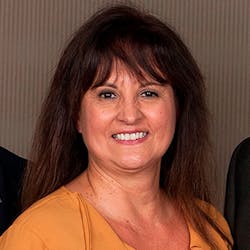Experts urge healthcare to plan now for next pandemic, crisis
As the COVID-19 pandemic depleted storeroom shelves to the point that manufacturing scrambled to catch up to demand, the Food and Drug Administration (FDA) granted “Emergency Use Authorization” for certain products to solve short-term supply problems and the federal agency granted a limited green light to reusing certain single-use products, such as N95 respirators.
When it comes to the oft controversial issue of reusing single-use devices (SUDs), at best the FDA can point to its policy on the practice put in place in 2000 – two decades ago. At worst, however, the agency’s leaving the door cracked open may demonstrate the need for some flexibility during a crisis nearly spinning out of control, but it also leaves any hard line open to interpretation long-term once the crisis abates.
Experts argue the providers and suppliers perhaps should be equally confused and concerned.
“While any measure that can help reduce the risks to short-term issues of protecting healthcare workers and patients should be explored, there are several concerns if these measures were adopted longer term,” Wiencek told Healthcare Purchasing News. “Disposable items that include textile/fabric components are designed to meet the requirements of protection through single- or short-term use while minimizing durability to reduce cost. They are not designed or constructed to withstand reprocessing.
“Some studies may have been able to demonstrate that certain items can be cleaned and decontaminated without destroying the minimum filtration, barrier or cleaning properties, but if all disposables were forced to meet the stringent requirements for products that are designed to be reusable, the disposables would no longer be affordable,” he continued. “Cleaning textiles presents its own set of challenges as the products that provide superior performance contain ‘microfiber.’ The delicate microfibers are excellent at grabbing and holding onto particles but make it difficult to effectively remove the particles during reprocessing without damaging the fibers. This becomes an acute issue in the cases where the products are contaminated with pathogens and must be re-laundered at high temperatures or with bleach to effectively decontaminate the products before returning to use.”
Even in the face of future crises and pandemics in 2022 and beyond, Wiencek questions whether the FDA should update its policies to enable limited reuse of SUDs to relieve the pressure from pent-up demand and lackluster supply.
“Caution is advised if facilities or regulatory agencies relax their guidance on re-using single-use items after the emergency from the COVID-19 pandemic subsides,” he insisted. “Some will make the argument that if it was acceptable during the pandemic, it proves these items are capable of multiple uses. However, just like approval of novel drug therapies under FDA’s Emergency Use Authorization, this short-term approval does not involve the same level of scrutiny as an official approval or registration.
“Formal approval for reusing items designed to be disposable would require new standard methods and specifications to first be developed and validated,” he continued. “Products would have to be tested to these new standards and demonstrate sufficient performance after reprocessing. Novel reprocessing methods might have to be developed that can effectively decontaminate these items without causing damage to the filtration, barrier or cleaning properties for items such as respirators, gowns and wipes, respectively. All this could create a slippery slope where many products are considered reusable after processing. Some can withstand a few cycles whereas others can be reused for more cycles. How will the number of use/processing cycles effectively be tracked and documented for each type of item?”
Jumping through hoops
The FDA wisely remains concerned about the public health risk presented by a reprocessed SUD, according to Benedict, who refers to and cites from the FDA policy.
“Some devices, which are low-risk when used only one time, may present an increased risk to the patient upon reprocessing,” Benedict noted. “Other SUDs are low risk when used for the first time and remain low risk after reprocessing, provided that the reprocessor conducts cleaning and sterilization/disinfection of the SUD in an appropriate manner. Other SUDs, however, cannot be reprocessed safely and should not be reprocessed and reused under any circumstances.”
Establishing a course of action
“The long-term public health consequences of reprocessing single-use devices will be determined through process audits, identification of hospital-acquired infections and monitoring the efficacy of SUDs that have undergone multiple episodes of reprocessing,” she said. “At present low-risk devices such as N95 respirators are being successfully reprocessed during this pandemic. However, it is important for anyone considering reprocessing a single-use device to know which devices can and cannot be safely reprocessed and who should be doing the reprocessing. Certain SUDs cannot withstand the same material stress during cleaning, disinfection and sterilization.”
“Although exceptions are made during a pandemic to assist with supply shortages and for Emergency Use Authorization, it should not be forgotten why these stringent processes are in place,” Pate indicated. “The approval process is to ensure that adequate research has been conducted to allow the use or reuse of the product in a safe manner. It gives adequate time for the discovery of unforeseen problems/concerns with the new product or process to be revealed that otherwise might not be immediately obvious. There needs to be a balance of critical need and safety for products and medications that are released for use.
“In the future, it may be difficult to convince the public that it is in everyone’s best interest that the long process of research and development is necessary,” she continued. “This may be debated especially if there were no adverse reactions or problems during the pandemic. The FDA and manufacturers may be encouraged to shorten the time currently required for manufacturing medications and products, and the actual time they are released. Perhaps the pandemic will enhance the production and approval of medications and supplies if it can be done in a safe, reasonable manner and delete the significant wait time between development and implementation. If this is done in a safe, reasonable method, it could benefit everyone in the future.”
“In the end, sterile processing is not a manufacturer and must have IFUs that state specifically how to complete the process,” Sargent said. “This must come from the manufacturers that have to complete testing to ensure their IFUs are providing appropriate direction for safe use of the devices. This is not something they have at hand and must develop.”
“Unfortunately, the shortage of many products has shown how dependent we have become on certain supplies from outside our border for medical facilities to give the care they need regardless of a pandemic,” Kovach noted. “This has forced us to be creative, to work together and to use science to find solutions. If one reads the various studies done on this subject, they are based on science, which is the difference. Before, facilities were reprocessing single-use items with not much data or information behind them.
“Short term, it helps us out while we get the supply chain for various products,” he continued. “Where it goes from there is anybody’s guess. But the future we can see is unlimited because this pandemic has shown we can solve any issue, even ones that we were told we should not do – such as reprocessing single-use devices – but with teamwork and science behind us.”
Turning point
“For supplies, we know that reusable items that can be safely reprocessed are more economical and environmentally friendly in most cases,” he indicated. “Disposable items offer the convenience of use and provide a ‘feeling’ of greater safety because the item is new. Evidence of our society’s reliance on disposable items is [shown] by the number and size of our landfills.
“Sterile Processing departments across the country process millions of reusable instruments and clean thousands of pieces of durable medical equipment daily,” Agoston continued. “When reprocessed correctly following the manufacturer’s guidelines, reprocessing is safe and effective. The excuse that disposables should be used to avoid the risk of inadequate reprocessing is often an excuse for poor technician performance, staff/ equipment shortages, poor training and/or management support and should not be accepted. SPD staff reprocess millions of items daily. If there are errors made, one should look at the systems, management and staffing to determine why the error occurred and correct the problem. If we can’t trust SPD to process one item effectively, how can we be confident in any of the work? Alternatively, imagine a system where every medical instrument was disposable. Imagine the impact that this would have on our environment and associated costs.”
Agoston recommends homing in on reusable equipment and supplies.
“Facilities that I am familiar with that reprocessed N95 masks labeled them with the name of the user so that the user received their mask back and not someone else’s. Even with this, there was still great apprehension in reusing the single-use devices,” he observed. “There was also apprehension by the staff who was responsible for transporting and reprocessing the mask. This latter concern was more related to the processes being new and unproven versus fear of handling contaminated items as hospital staff – including SPD – handle contaminated items all of the time. I believe that the pandemic has created an opportunity for industry to look at all disposable devices to see if there is a way to make them reusable or perhaps a version that has a reusable component and a small disposable component.”
Any optimal solution will center on the financials and total costs of ownership, Agoston acknowledges.
“Economics will determine what is best,” he said. “For disposables, they tend to have lower purchase prices than a reusable device, but have a much higher cost of disposal. There also are the reoccurring costs associated with the [purchase order] process and costs for inventory management, etc. Reusable devices tend to have higher purchase prices and a reprocessing, repair and disposal cost. The overall costs of ownership should include all costs divided by the number of uses to determine the total cost per use.”
Agoston warns that the industry should anticipate the reality of the next pandemic and prepare now. “Whether reusable or disposable or a combination, Supply Chain managers should evaluate total cost per use, current and future needs and build stock to avoid shortages when the next pandemic or disaster strikes. Having dependable manufacturing capability and logistic systems are a must,” he added.
Editor’s Note: Healthmark Industries recommended the following podcasts as useful references:
• Finding a Safe and Effective Way to Process PPE. Two physicians from the University of Michigan Medicine, share their story of multidisciplinary collaboration that led to finding the safest and most effective way to process N95 masks: https://pod.co/hmark/20-finding-a-safe-and-effective-way-to-process-ppe
• Interview with Michelle Hoste. Michelle Hoste, SPD Manager and military veteran shares how her team collaborated with other departments and Infection Control to come up with a way to safely process N95 masks, keeping their frontline equipped with the PPE they need to combat the pandemic: https://pod.co/hmark/6-bonus-episode-interview-with-michelle-hoste






